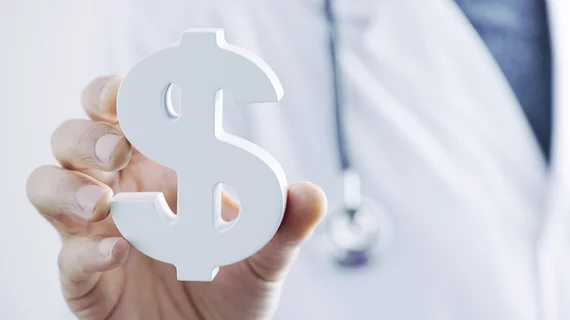CABG, TAVR top list of most lucrative heart procedures for hospitals
Coronary artery bypass graft (CABG) surgery and transcatheter aortic valve replacement (TAVR) are the two most lucrative heart procedures for U.S. hospitals, according to a new analysis of Medicare data published in American Heart Journal.[1]
Other procedures are more profitable—heart transplants, for instance—but CABG and TAVR are performed much more often, making them more lucrative in the long run.
The study’s authors noted that spending on cardiovascular disease in the United States increased by more than $100 billion from 1996 to 2016.
“Most of the increase in spending is borne by public insurance programs such as Medicare,” wrote senior author Ashwin S. Nathan, MD, MS, an interventional cardiologist with the Giri-Nathan Cardiovascular Health Services and Policy Research Lab at the University of Pennsylvania’s Perelman School of Medicine, and colleagues. “The Centers for Medicare and Medicaid Services (CMS) maintains a policy of ‘budget neutrality’ in an effort to contain healthcare expenditures by adjusting reimbursement based on costs to providers. One prior study found variation in costs and payments for TAVR and surgical aortic valve replacement (SAVR), but hospital-level financial margins for other cardiovascular procedures remain unknown.”
To learn more about the costs of various interventional and surgical cardiac procedures, Nathan et al. explored inpatient claims for fee-for-service Medicare beneficiaries aged 65 years old or older. They focused on procedures performed from 2016 to 2019 at acute care hospitals throughout the United States, evaluating the revenue, cost and contribution margin for each procedure. Contribution margins were calculated subtracting by the cost from the total revenue—this represents the profits the hospitals are receiving after the procedure has been performed.
Overall, the group confirmed that revenues, costs and contribution margins for these procedures vary significantly from one hospital to the next. The procedures associated with the highest median contribution margins were heart transplants ($107,000), surgical left ventricular assist device implantation ($47,000), surgical mitral valve replacement/repair ($14,000), SAVR ($11,000) and CABG ($10,000).
When exploring data on interventional procedures, meanwhile, the group determined that TAVR had a median contribution margin of $8,000 and transcatheter mitral valve repair had a median contribution margin of $5,000.
Nathan’s team then looked at how often these procedures were performed to capture an even better idea of how hospitals were earning their revenue. Because CABG and TAVR are so commonly performed throughout the country, these were ultimately associated with the highest total financial gain for U.S. hospitals. The total financial gain was nearly $1.5 billion for CABG. For TAVR, meanwhile, it was more than $900 million.
“Further work is needed to characterize variation in contribution margins of cardiovascular procedures across other payer types,” the authors wrote. “Additionally, when setting reimbursements, policymakers should consider the impact of financial barriers on adoption of cardiovascular technologies in resource-limited and rural areas and subsequent inequities in access to these technologies among marginalized populations.”
Dollar amounts throughout this article were rounded.
Click here to read the full study.

